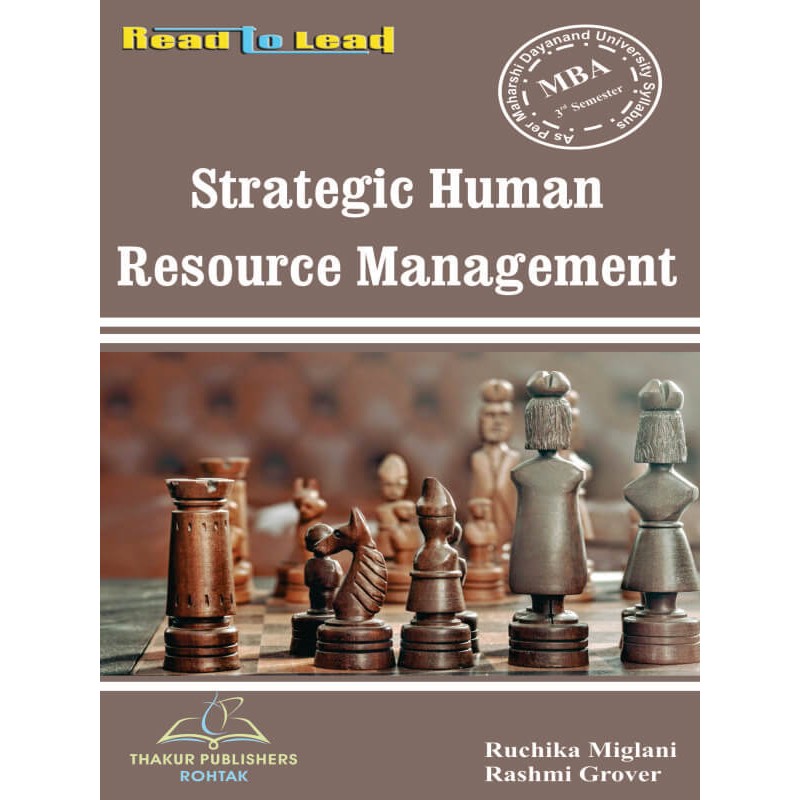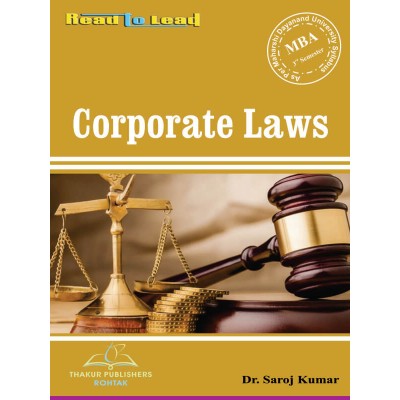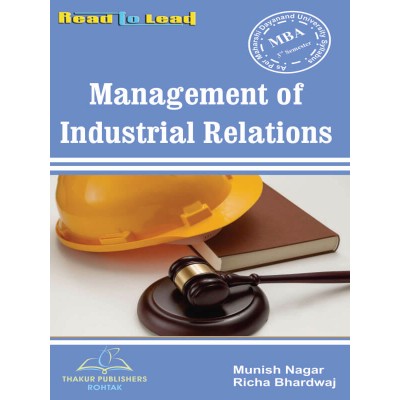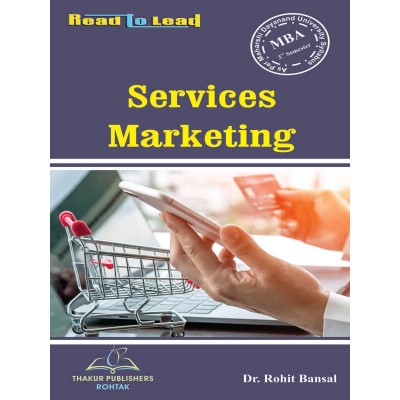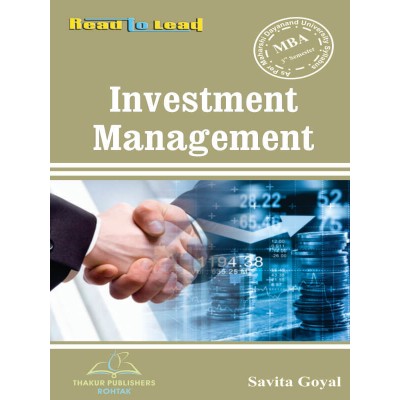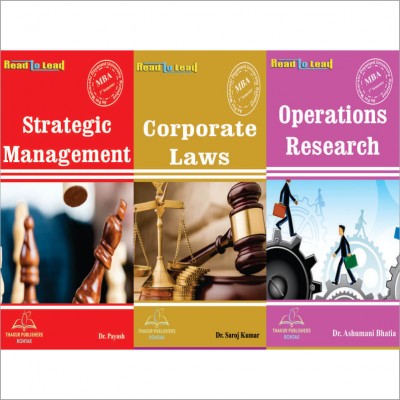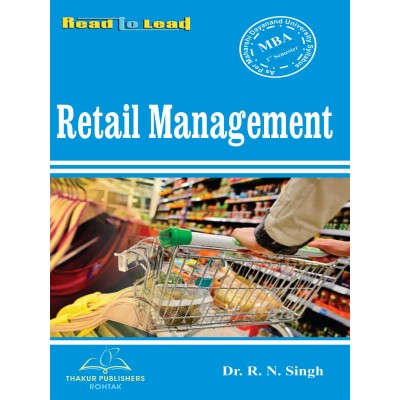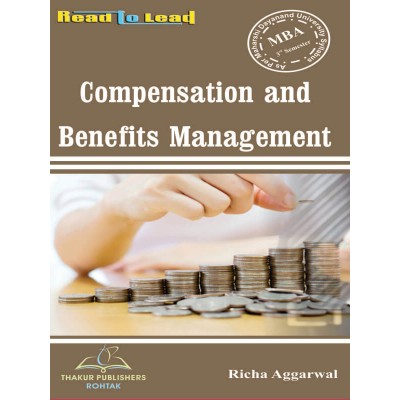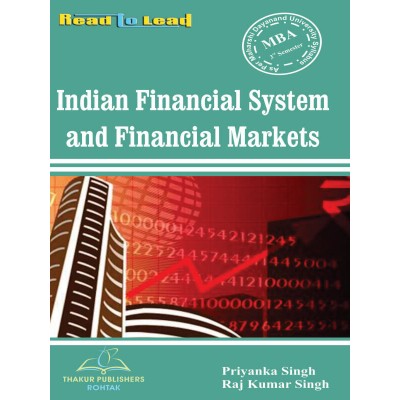Strategic Human Resource Management
₹180.00
Tax excluded
Contents
|
|
Unit 1: Strategic HRM |
|
|
1.1.
|
Strategic HRM
|
11
|
|
1.1.1. |
Introduction to Strategic HRM |
11 |
|
1.1.2. |
Scope of SHRM |
12 |
|
1.1.3. |
Features of SHRM |
12 |
|
1.1.4. |
Components of SHRM |
13 |
|
1.1.5. |
Objectives of SHRM |
14 |
|
1.1.6. |
Evolution/ Development of SHRM |
14 |
|
1.1.7. |
Difference between Traditional HRM and SHRM |
15 |
|
1.1.8. |
Challenges/Barriers to Strategic HR |
16 |
|
1.1.9. |
Overcoming Barriers of SHRM |
18 |
|
1.1.10. |
Importance of SHRM |
19 |
|
1.2.
|
An Investment Perspective of Human Resource Management
|
20
|
|
1.2.1. |
Introduction |
20 |
|
1.2.2. |
Aspects of Investment in Human Resource |
22 |
|
1.2.2.1. |
Human Resource Investment Consideration |
22 |
|
1.2.2.2. |
Investment in Training and Development |
24 |
|
1.2.2.3. |
Investment Practices for Improved Retention |
35 |
|
1.2.2.4. |
Investment in Job Secure Workforces |
40 |
|
1.2.2.5. |
Non- Traditional Investment Approaches |
45 |
|
1.3.
|
SHRM Approaches: The Indian Context
|
48
|
|
1.3.1. |
Introduction |
48 |
|
1.3.2. |
Integrated System Model |
48 |
|
1.3.3. |
The HRD Framework |
51 |
|
1.3.4. |
HRD as an Approach |
51 |
|
1.3.5. |
The Indian Approach vs. the Western Approach |
52 |
|
1.4.
|
Exercise
|
53
|
|
|
|
|
|
|
Unit 2: Human Resource Evaluation and Human Resource Planning |
|
|
2.1.
|
Human Resource Evaluation
|
54
|
|
2.1.1. |
Concept of HR Evaluation |
54 |
|
2.1.2. |
Purposes of HR Evaluation |
54 |
|
2.1.3. |
Linkages between HRM and Firm Performance |
56 |
|
2.1.4. |
Aspects of HR Evaluation |
59 |
|
2.1.5. |
Rational Approaches to Evaluation of HR |
61 |
|
2.1.6. |
Myths Related to HR Evaluation |
64 |
|
2.1.7. |
Benefits of HR Evaluation |
68 |
|
2.1.8. |
Obstacles in HR Evaluation |
69 |
|
2.2. |
Strategic Fit Frameworks |
71 |
|
2.2.1. |
Meaning and Definition of Strategic Fit |
71 |
|
2.2.2. |
Types of Strategic Fit |
71 |
|
2.2.3. |
Approaches for Development of HR Strategy |
72 |
|
2.2.3.1. |
Linking Business Strategy and HR Strategy (Best Fit Approach) |
72 |
|
2.2.3.2. |
HR Bundles Approach |
77 |
|
2.2.3.3. |
Best Practice Approach |
79 |
|
2.3.
|
HRM Practices
|
81
|
|
2.3.1. |
Concept of HRM Practices |
81 |
|
2.3.2. |
Factors Affecting HRM Practices |
82 |
|
2.3.3. |
Importance of HRM Practices |
84 |
|
2.3.4. |
Distinctive HR Practices |
85 |
|
2.3.4.1. |
Recruitment, Training and Development |
85 |
|
2.3.4.2. |
Induction |
86 |
|
2.3.4.3. |
Retention Strategy |
86 |
|
2.3.4.4. |
Leadership |
87 |
|
2.3.4.5. |
Outsourcing |
87 |
|
2.3.4.6. |
Offshoring |
87 |
|
2.4.
|
Human Resource Planning (HRP): An Overview
|
88
|
|
2.4.1. |
Meaning and Definition of Human Resource Planning |
88 |
|
2.4.2. |
Nature of Human Resource Planning |
89 |
|
2.4.3. |
Scope of Human Resource Planning |
89 |
|
2.4.4. |
Significance of Human Resource Planning |
90 |
|
2.4.5. |
Perspectives of HRP |
91 |
|
2.4.6. |
Objective of HRP |
92 |
|
2.4.7. |
Business Strategy and HRP |
92 |
|
2.4.8. |
Factors Influencing Human Resource Planning |
95 |
|
2.4.9. |
Process of HRP |
97 |
|
2.4.9.1. |
Environmental Scanning |
98 |
|
2.4.9.2. |
Organisational Objectives and Policies |
98 |
|
2.4.9.3. |
Demand Forecasting |
99 |
|
2.4.9.4. |
Supply Forecasting |
101 |
|
2.4.9.5. |
Estimating Manpower Gaps |
103 |
|
2.4.9.6. |
Matching Supply and Demand |
103 |
|
2.4.9.7. |
Action Planning |
106 |
|
2.4.9.8. |
Evaluation and Control |
106 |
|
2.4.10. |
Limiting Factors of Human Resource Planning |
107 |
|
2.4.11. |
Guidelines for Effective Human Resource Planning |
108 |
|
2.5.
|
Exercise
|
110
|
|
|
|
|
|
|
Unit 3: HR Systems |
|
|
3.1.
|
HR Systems
|
111
|
|
3.1.1. |
Introduction |
111 |
|
3.1.2. |
Steps in Developing HR Systems |
112 |
|
3.1.3. |
Components of HR Systems |
113 |
|
3.2. |
Staffing Systems |
114 |
|
3.2.1. |
Meaning and Definition of Staffing |
114 |
|
3.2.2. |
Nature of Staffing |
115 |
|
3.2.3. |
Process of Staffing |
115 |
|
3.2.4. |
Recognising Staffing Systems that Fit the Firms Business Strategy |
117 |
|
3.2.5. |
Potential versus Achievement Orientation |
118 |
|
3.2.5.1. |
Recognising High-Quality Practices When Selecting for Achievement |
118 |
|
3.2.5.2. |
Recognising High-Quality Practices When Selecting for Potential |
120 |
|
3.2.6. |
Organisational Fit and Systems for Addressing Employee Motivation |
121 |
|
3.2.7. |
Importance of Staffing |
123 |
|
3.3. |
Reward and Compensation Systems |
123 |
|
3.3.1. |
Reward System |
123 |
|
3.3.1.1. |
Aim of Reward System |
124 |
|
3.3.1.2. |
Components of a Reward System |
124 |
|
3.3.2. |
Compensation |
128 |
|
3.3.2.1. |
Compensation System/Components of Compensation |
129 |
|
3.3.2.2. |
Factors Influencing Compensation |
131 |
|
3.3.2.3. |
Importance of Compensation |
132 |
|
3.3.3. |
Aligning Reward and Compensation Strategy with Firm’s Business Strategy |
134 |
|
3.3.4. |
Pay Level: Maintaining External Competitiveness in Compensation |
135 |
|
3.3.5. |
Use of Pay Surveys for Competitive Market Data |
136 |
|
3.3.5.1. |
Sources of Data for Pay Surveys |
137 |
|
3.3.5.2. |
Strategic Considerations of Pay Surveys |
139 |
|
3.3.6. |
Pay Structure: Maintaining Internal Consistency in Job Pricing |
140 |
|
3.3.6.1. |
Establishing an Internally Consistent Pay Structure using Job Evaluation |
141 |
|
3.3.6.2. |
Creating Pay Structure: Blending External Competitiveness and Internal Consistency |
143 |
|
3.3.7. |
Pay Systems |
145 |
|
3.3.7.1. |
Performance-Contingent Pay and Pay at Risk |
146 |
|
3.3.7.2. |
Pay for Other Employee Contributions |
148 |
|
3.3.8. |
Employee Benefits |
149 |
|
3.3.8.1. |
Types of Fringe Benefits |
149 |
|
3.3.8.2. |
Importance of Employee Benefits |
156 |
|
3.4.
|
Employee and Career Development Systems
|
157
|
|
3.4.1. |
Introduction |
157 |
|
3.4.2. |
Training and Development System |
158 |
|
3.4.2.1. |
Systematic Approach to Training |
158 |
|
3.4.2.2. |
Measures for Making Employee Development System Effective |
163 |
|
3.4.2.3. |
Role of Training in Career Development |
164 |
|
3.4.3. |
Career Development System |
165 |
|
3.4.3.1. |
Designing Effective Career Development Systems |
165 |
|
3.4.3.2. |
Benefits of a Career Development System |
167 |
|
3.4.3.3. |
Career Development as Motivational Tool for Employee |
169 |
|
3.5.
|
Performance Management Systems (PMS)
|
171
|
|
3.5.1. |
Meaning of PMS |
171 |
|
3.5.2. |
Purposes and Uses of PMS |
172 |
|
3.5.3. |
Components of PMS |
174 |
|
3.5.4. |
Prerequisites for an Effective PMS |
175 |
|
3.5.5. |
Aligning Performance Management Systems with Firm’s Strategy |
177 |
|
3.5.6. |
Performance Appraisal as a Tool of Performance Management |
178 |
|
3.5.7. |
Advantages of PMS |
189 |
|
3.5.8. |
Disadvantages of PMS |
191 |
|
3.6.
|
Exercise
|
192
|
|
|
|
|
|
|
Unit 4: Strategic Option |
|
|
4.1.
|
Strategic Options and HR Decisions
|
190
|
|
4.2.
|
Downsizing and Restructuring
|
191
|
|
4.2.1. |
Meaning of Downsizing |
191 |
|
4.2.2. |
Characteristics of Downsizing |
191 |
|
4.2.3. |
Reasons for Downsizing |
193 |
|
4.2.4. |
Types of Downsizing Strategies |
193 |
|
4.2.5. |
Survivors of Downsizing |
194 |
|
4.2.6. |
Benefits of Downsizing |
196 |
|
4.2.7. |
Consequences of Downsizing |
197 |
|
4.2.8. |
Precautions to be Taken While Downsizing |
198 |
|
4.3.
|
Labour Markets
|
199
|
|
4.3.1. |
Meaning of Labour Market |
199 |
|
4.3.2. |
Characteristics of Labour Market |
200 |
|
4.3.3. |
Components of Labour Market |
200 |
|
4.3.4. |
Types of Labour Markets |
202 |
|
4.3.5. |
Unemployment Rate and Labour Markets |
207 |
|
4.4.
|
Mergers and Acquisitions (M&As)
|
209
|
|
4.4.1. |
Concept of Mergers and Acquisitions |
209 |
|
4.4.2. |
Reasons for Mergers and Acquisitions |
210 |
|
4.4.3. |
Types of Mergers and Acquisitions |
212 |
|
4.4.4. |
Stages and HR Issues Involved in Mergers and Acquisitions |
214 |
|
4.4.5. |
Role of HR Professionals in Mergers and Acquisitions |
216 |
|
4.4.6. |
Advantages of Mergers and Acquisitions |
218 |
|
4.4.7. |
Mistakes in Mergers and Acquisitions |
219 |
|
4.5.
|
MDU2020/MBA/3/06
81 Items
New product
12 other products in the same category: |
